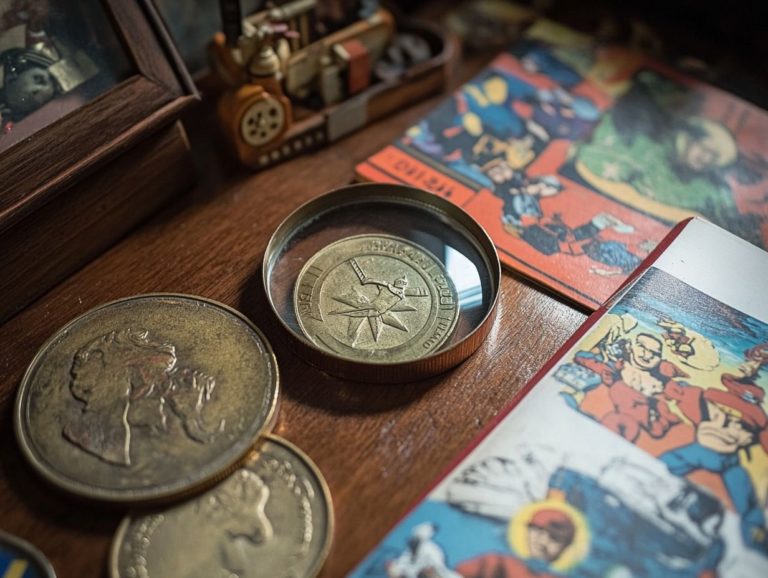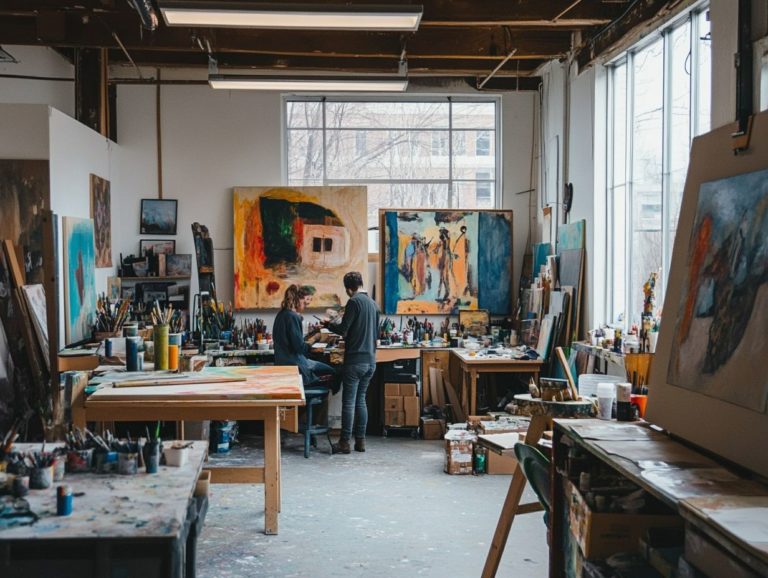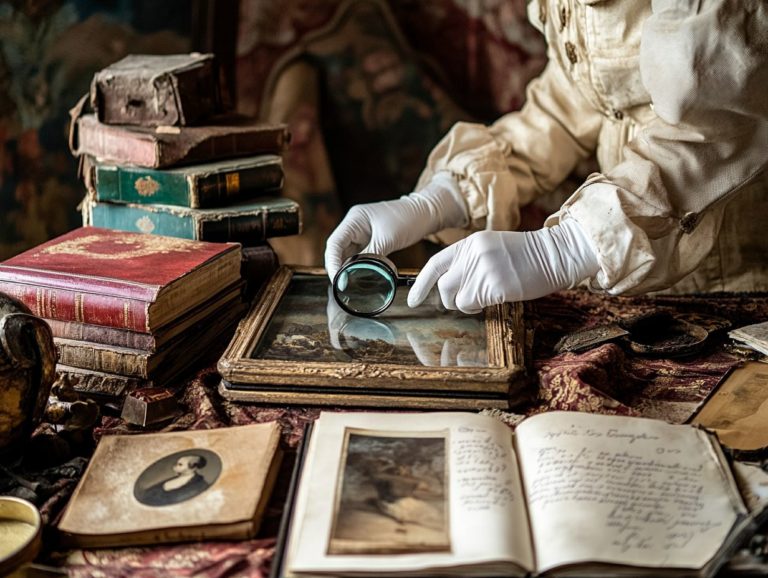How to Curate a Personal Art Collection
Collecting art is more than just a hobby. It s a personal journey that reflects your tastes, values, and passions.
Whether you re an experienced connoisseur or new to the art world, understanding the importance of a personal collection can enhance your living space and enrich your life in unexpected ways.
This guide helps you identify your artistic preferences, set a budget, source authentic pieces, display your collection, and evolve it over time.
Immerse yourself and uncover the secrets to curating a collection that truly resonates with you.
Contents
- Key Takeaways:
- The Importance of a Personal Art Collection
- Identifying Your Artistic Preferences
- Setting a Budget for Your Collection
- Researching and Sourcing Art Pieces
- Displaying and Maintaining Your Collection
- Growing and Evolving Your Collection
- Frequently Asked Questions
- How do I begin curating a personal art collection?
- What should I think about when choosing artwork for my collection?
- How do I determine the value of an artwork for my personal collection?
- What are some methods for displaying a personal art collection?
- How can I care for my personal art collection?
- What are some tips for growing and expanding a personal art collection?
Key Takeaways:
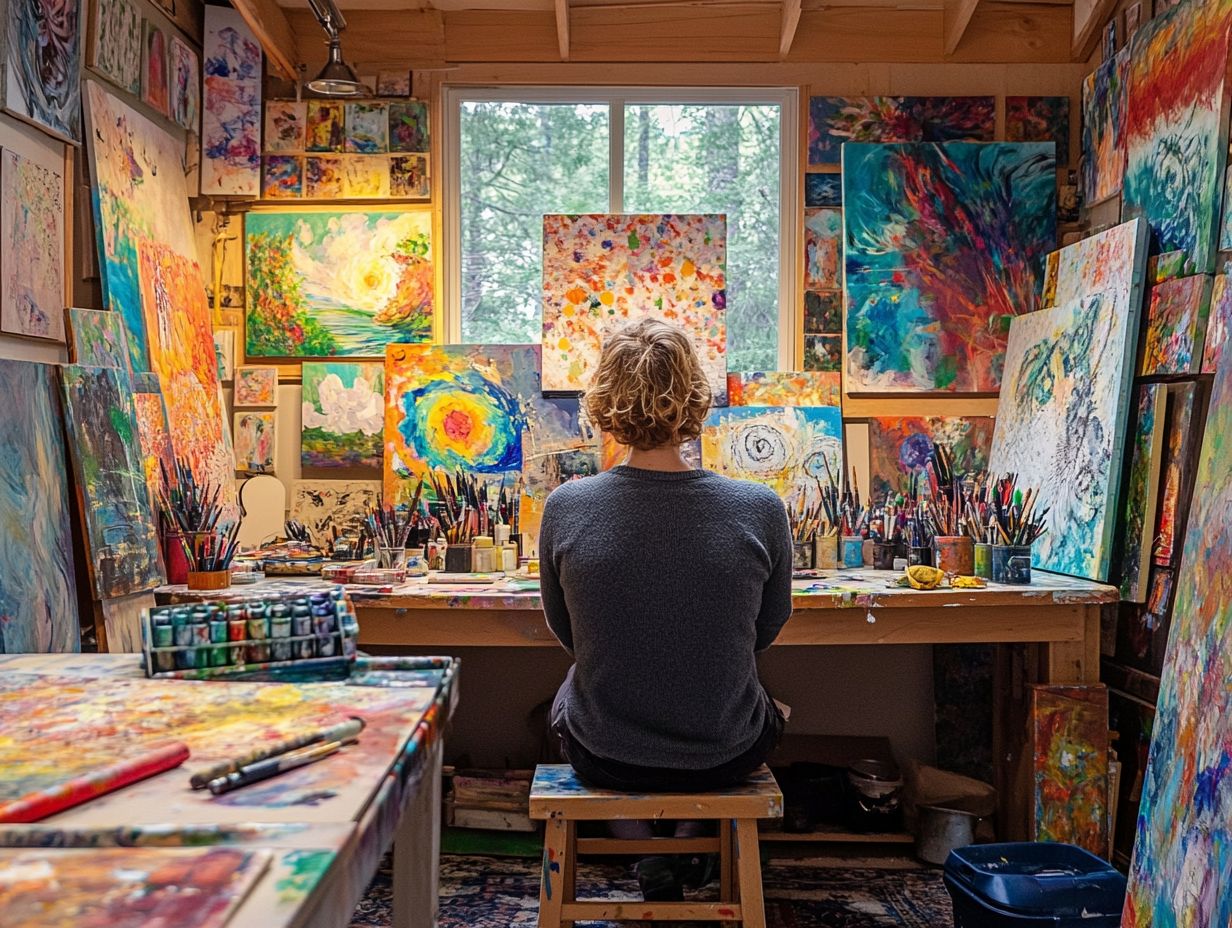
Building a personal art collection allows for self-expression and adds aesthetic value to your space. To begin, identify your artistic preferences by exploring different styles and mediums to curate a collection that reflects your taste. For those interested in photography specifically, check out this guide on how to start collecting photography art. Set a budget and research reputable sources to ensure authenticity. Consider display methods and proper maintenance for your art collection.
The Importance of a Personal Art Collection
A personal art collection is more than a compilation of artworks; it reflects your emotional journey and personal expression.
Investing in art allows you to create a unique narrative that resonates with your experiences, encapsulating emotions, memories, and cultural values.
This process can transform art into a striking centerpiece of your home decor, fulfilling both aesthetic and investment roles.
Building relationships with artists and exploring various artistic approaches can elevate your collecting experience, turning each piece into a story worth sharing.
Why Collect Art?
Collecting art is an exciting way to express yourself and can also be a smart investment, especially for those who value emotional connections with their pieces.
For many, the thrill of acquiring a stunning painting or an intriguing sculpture goes beyond financial returns; each artwork tells a story that resonates personally.
Imagine a large canvas from an emerging artist as the centerpiece of your living room, sparking conversations and introspective moments. A meticulously crafted bronze sculpture could enhance the serenity of your garden.
Artists across diverse mediums, from bold contemporary installations to timeless oil paintings, evoke emotions that invite collectors into their creative realms. This unique duality enjoying the aesthetic pleasure while considering potential future value makes art collection an enriching pursuit that intertwines passion with foresight.
Identifying Your Artistic Preferences
Identifying your artistic preferences involves exploring your tastes, what techniques inspire you, and the subject matter that resonates.
Whether you re drawn to contemporary art or nature-inspired pieces, delving into what captivates you will enhance your creative journey and the visual interest in your collection.
Exploring Different Art Styles and Mediums
Exploring various art styles and mediums is essential for understanding the visual balance and emotional depth that different art forms can evoke.
Diving into textile art reveals layers of meaning intricately woven into the fabric, while painting invites you to experience a vibrant palette of emotions, with each stroke narrating a unique story.
These methods showcase remarkable technical skill and convey a rich spectrum of feelings, encouraging you to engage on a deeper level.
To truly appreciate the nuances of different mediums, approach them with an open mind, allowing the artwork to resonate with your experiences.
When curating your collection, consider how the pieces coexist; a thoughtful arrangement emphasizing both contrast and harmony can enhance each artwork’s emotional impact.
Setting a Budget for Your Collection
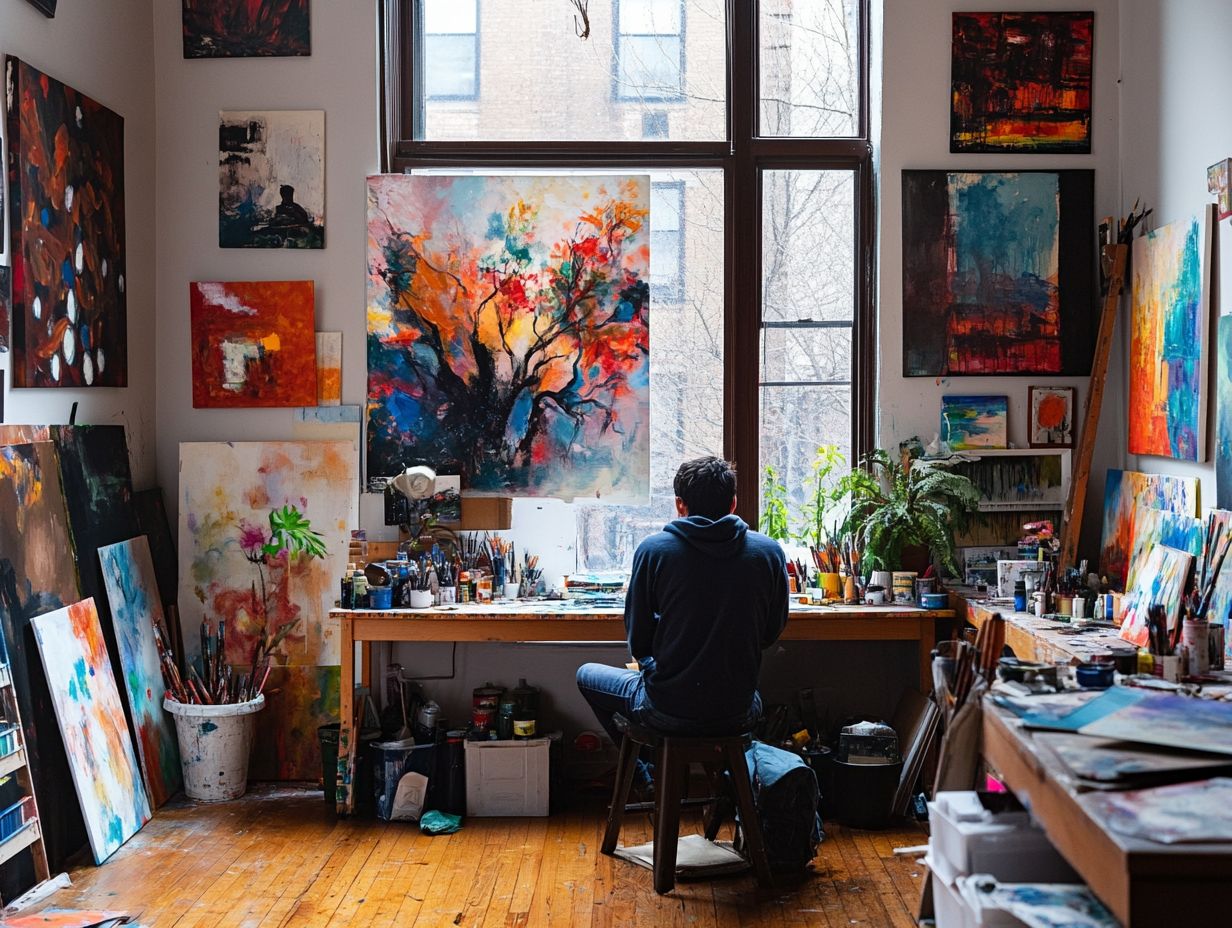
Setting a budget for your art collection is essential. This approach allows you to explore a diverse range of original art options across various price points, ensuring that your investment aligns with your financial strategy and reflects your market awareness.
Determining How Much You Can Spend
Determining your budget for art is a crucial step in crafting an investment strategy that truly resonates with your passion as a collector.
Begin by evaluating your overall financial health take a close look at your income, expenses, and any existing debts. This assessment will guide you in setting a sustainable spending limit.
Reflecting on your investment goals will also help you decide which pieces are worth pursuing and how much of your budget to allocate for them.
Creating a flexible budget that accommodates both essential expenses and those delightful spontaneous purchases allows you to strike a harmonious balance between indulging your love for art and maintaining your financial stability.
This thoughtful approach not only enhances your collecting experience but also safeguards your long-term financial well-being.
Researching and Sourcing Art Pieces
Researching and sourcing art pieces requires a keen understanding of authenticity and the ability to navigate diverse art markets, galleries, and fairs.
It s essential to cultivate fruitful relationships with artists, enhancing your appreciation and insight into the art world.
Where to Find Art and How to Authenticate It
Finding art can be an exhilarating journey for you, whether you re visiting local galleries, attending art fairs, or exploring online platforms. It s essential to grasp the authentication process for original pieces along the way.
Navigating the art world requires your keen eye and discerning approach, especially when it comes to recognizing a piece’s authenticity. As an art lover, you ll likely hear others emphasize the importance of sourcing works from reputable galleries or established online platforms, where you can expect detailed provenance and certificates of authenticity.
Take, for example, an experienced collector who once stumbled upon a breathtaking painting at a local fair. They later discovered that the piece lacked proper documentation, a revelation that reinforced the value of working with reputable sources.
Not only do these sources enhance the artwork’s value, but they also instill a sense of confidence in its legitimacy, making your journey in the art world all the more rewarding.
Displaying and Maintaining Your Collection
Displaying and maintaining your art collection is essential for preserving its value and impact. It requires a thoughtful selection of display methods, optimal lighting, and strategic placement.
By focusing on these elements, you not only resonate with art enthusiasts but also elevate your home decor to new heights. Ongoing care for your collection ensures it remains a cherished focal point in your space, reflecting your passion and appreciation for art.
Choosing the Right Display Method and Caring for Your Art
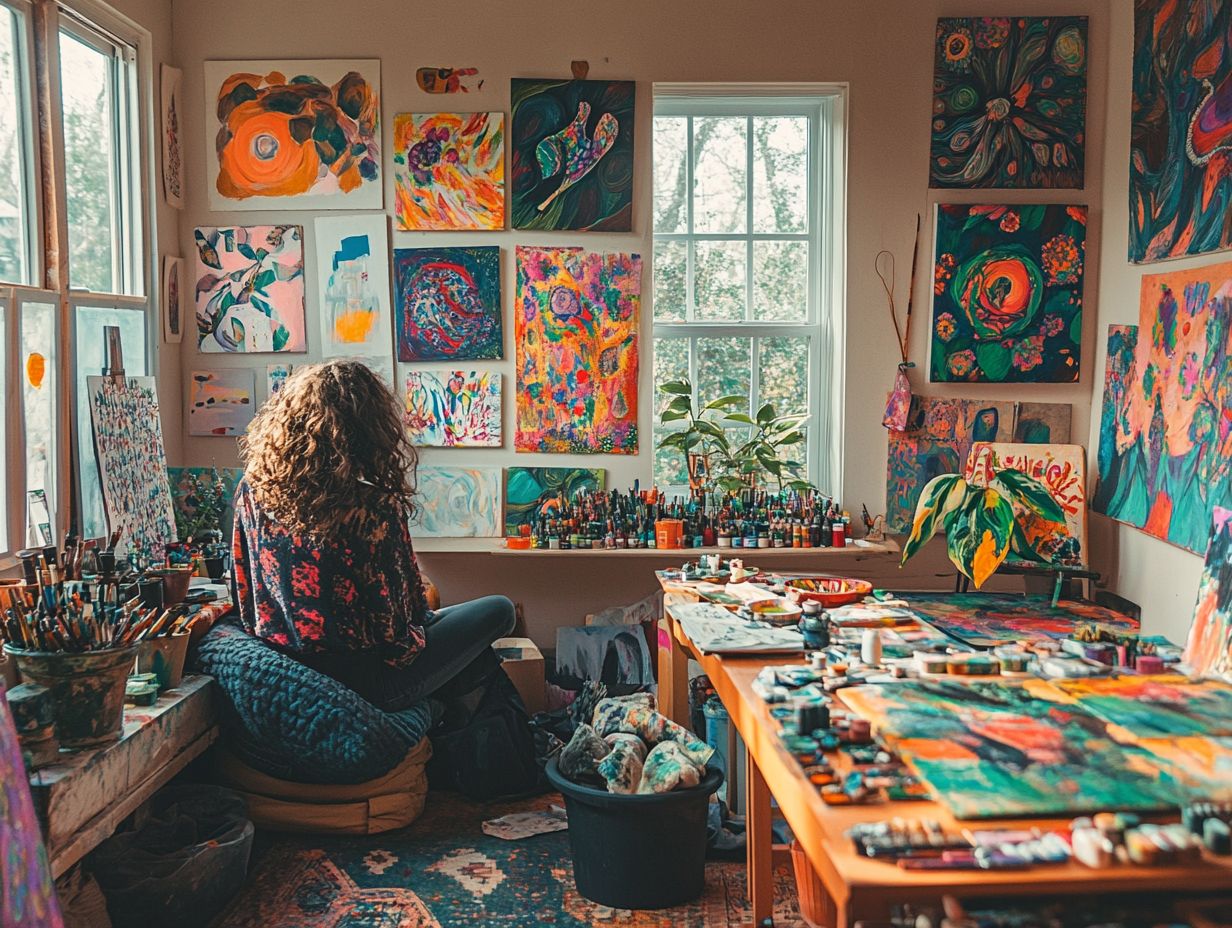
Choosing the right display method for your art is about more than just aesthetics; it s also about ensuring your investment remains in pristine condition.
You have a variety of display options at your disposal, each offering its own unique visual appeal and protective qualities. For example, framing can beautifully enhance the overall look of your artwork while shielding it from dust and damage. However, it may restrict the size and flexibility of your display.
On the other hand, opting for unframed or mounted art gives you a contemporary vibe but requires a bit more diligence to protect it from environmental factors.
Regardless of the method you choose, remember to keep your art away from direct sunlight, maintain a stable temperature, and dust it regularly. These simple practices will help preserve its vibrancy and longevity, allowing you to enjoy your collection for many years ahead.
Growing and Evolving Your Collection
Cultivar y expandir tu colecci n de arte es un viaje din mico, uno que te invita a refinar continuamente tu gusto personal.
Este proceso te permite entrelazar nuevas experiencias art sticas y conocimientos adquiridos en el camino, enriqueciendo tu apreciaci n y comprensi n general del arte.
Adding to Your Collection and Keeping It Fresh
Adding to your collection keeps it fresh. This practice deepens your appreciation for art and reflects your evolving tastes.
By exploring different art styles and trends, you can discover new pieces that genuinely resonate with your unique sensibilities. Explore different sources now! Galleries, online platforms, and art fairs can surprise you with inspiring finds.
Look for pieces that match your current tastes; this not only enhances your collection but also ensures it stays relevant in today s shifting aesthetic landscape. Observing emerging artists and movements allows you to remain attuned to what captivates audiences, all while arranging your collection in a meaningful way that tells your personal stories.
Frequently Asked Questions
How do I begin curating a personal art collection?
To begin curating a personal art collection, start by identifying your personal taste and interests. This will help guide your selection of artwork. Additionally, you can refer to resources on how to start a collectible art portfolio and attend art shows, galleries, and exhibitions to experience different styles and mediums.
What should I think about when choosing artwork for my collection?
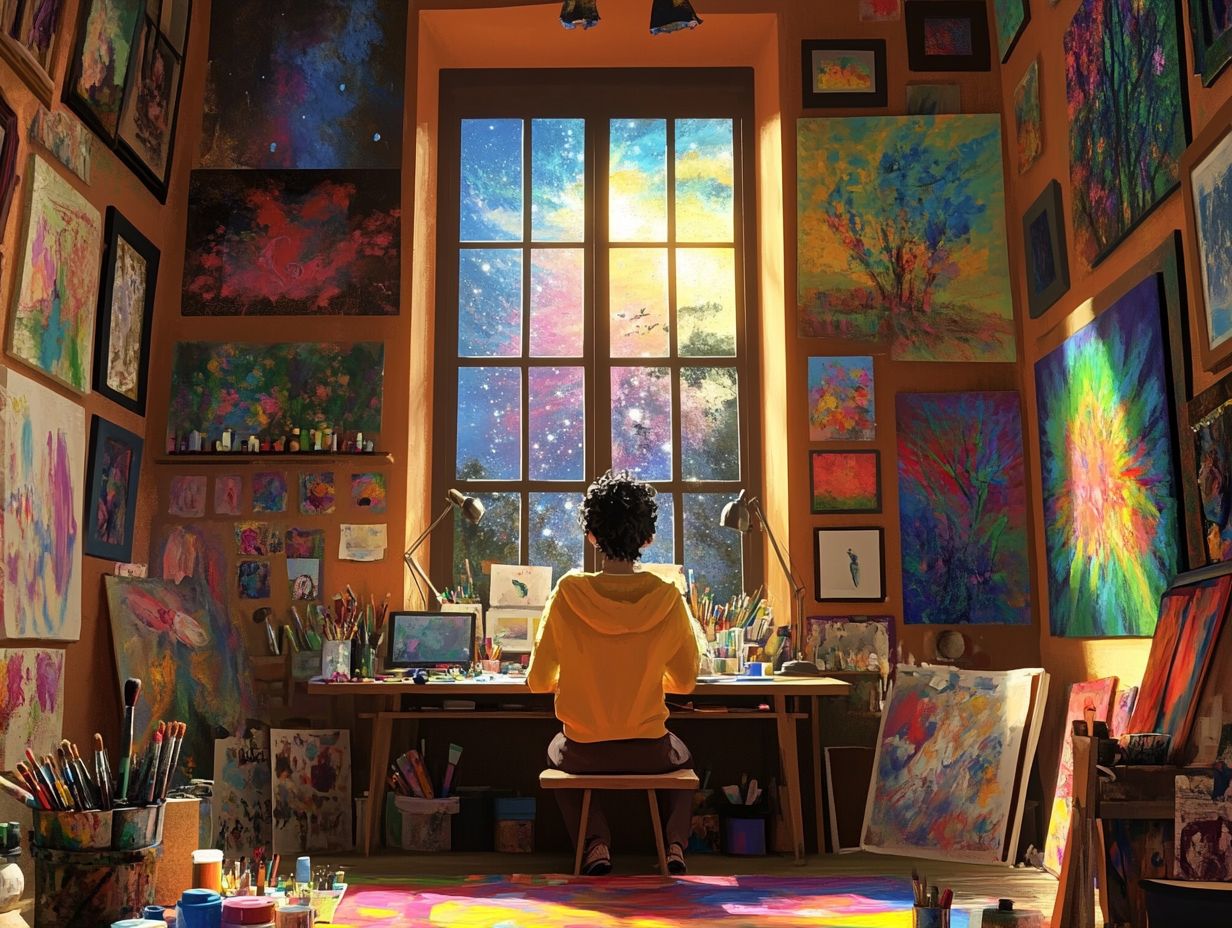
When selecting artwork, consider the artist’s reputation, the quality and condition of the piece, its historical or cultural significance, and its potential for investment value. Choose pieces that you personally connect with and enjoy.
How do I determine the value of an artwork for my personal collection?
The value of an artwork can be determined by factors such as the artist’s reputation, the rarity and condition of the piece, the demand for their work, and recent sale prices of similar pieces. Consulting with an art appraiser can also help establish value.
What are some methods for displaying a personal art collection?
You can display your collection in several ways: hang pieces on walls, use shelves or pedestals for sculptures or smaller pieces, or create a dedicated gallery space in your home. Consider lighting and spacing to ensure effective showcasing.
How can I care for my personal art collection?
To care for your collection, keep the artwork away from direct sunlight, extreme temperatures, and humidity. Regularly dusting and cleaning the pieces can help preserve their condition. Consult with a professional art conservator for any restoration or preservation needs.
What are some tips for growing and expanding a personal art collection?
To grow and expand your collection, stay on the pulse of the art world to discover exciting new artists! Attend events and exhibitions, network with other collectors, and explore auctions and art fairs for opportunities to acquire new pieces. Continuously research and educate yourself about the art market to make informed decisions.


